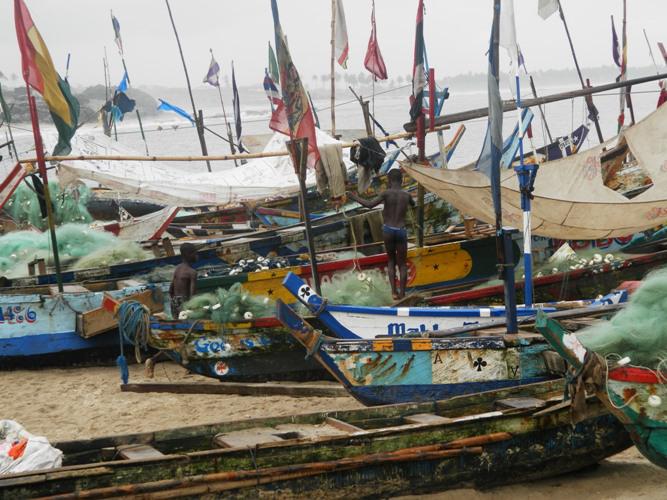Prosper Kwame Antwi
Other projects
17 May 2010
Sustainable Community Conservation of Borassus aethiopum in the Transitional Zone of Ghana
3 May 2016
Community-Based Approach to Marine and Coastal Resources Management in the Muni-Pomadze Ramsar Site, Ghana
Through capacity building and participatory approach, this project aims at training the local fishermen on best practices for by-catch handling and release methods, as well as, providing them with the requisite tools to be able to safely handle and release sea turtles.

According to IUCN, the recovery of sea turtle population cannot be achieved from increasing the hatchling production alone because of the very high mortalities as fisheries’ by-catch (Martinez, 2000). The issue is that, often, Sea turtles are caught in trawl nets, on long-line hooks and in fishing gillnets and they are not able to breathe or are not released from the nets/hooks properly and end up drowning.
In past sea turtle projects at the MPRS site, A Rocha has witnessed the poor handling and release practices by the local fishermen; leading to the further decline of the endangered sea turtles. With the current estimated numbers by death through by-catch handling increasing each passing day, A Rocha identifies with IUCN that, recovering sea turtle populations cannot be achieved from increasing the hatchling production alone because there are very high mortalities due to fisheries’ by-catch. Therefore, through capacity building and participatory approach, this project aims at training the local fishermen on best practices for by-catch handling and release methods, as well as, providing them with the requisite tools to be able to safely handle and release sea turtles. Ultimately, fisher groups’ collective action will be engendered for the sustainable conservation and/or management of Sea turtles and their habitat.
This will not only impact positively on the coastal resources management but also on the livelihood of the fisher groups- as sea turtles among many other benefits regulate jelly-fish which feeds on most fingerlings.